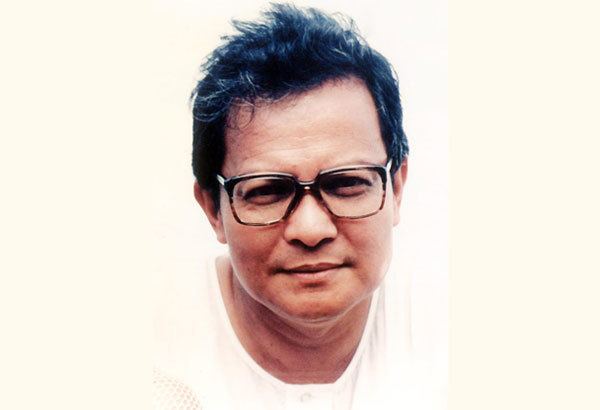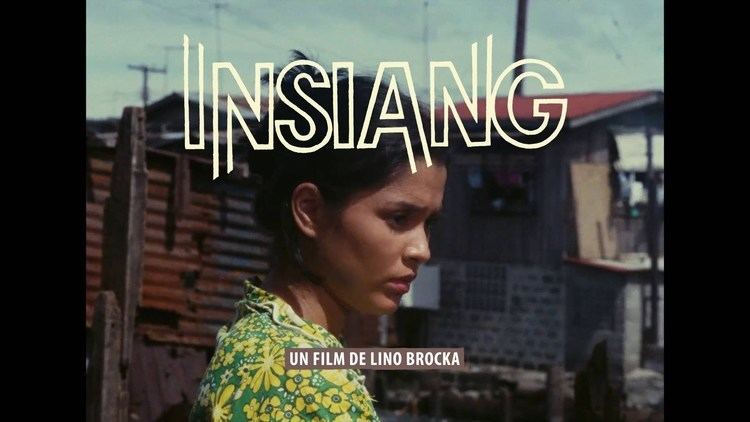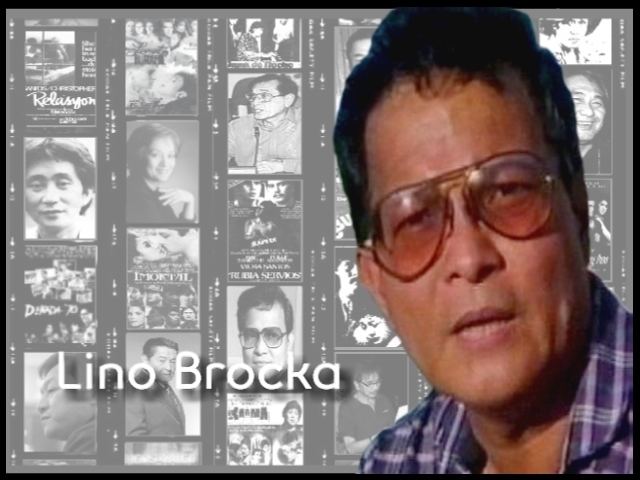Years active 1970-1991 | Name Lino Brocka Role Film director | |
 | ||
Full Name Catalino Ortiz Brocka Relatives Q. Allan Brocka (nephew) Parents Pilar Ortiz, Regino Brocka Movies Manila in the Claws of Light, Insiang, Weighed But Found Wanting, Fight for Us, Bona Similar People Mike De Leon, Ishmael Bernal, Lolita Rodriguez, Hilda Koronel, Phillip Salvador Died May 22, 1991 (aged 52) Quezon City, Philippines Education University Of The Philippines, Nueva Ecija High School Nationality Filipino Zodiac Sign Aries | ||
shortcut pandayang lino brocka film fest entry
Catalino "Lino" Ortiz Brocka (April 3, 1939 – May 22, 1991) was a Filipino film director. He is widely regarded as one of the most influential and significant Filipino filmmakers in the history of Philippine cinema. In 1983, he founded the organization Concerned Artists of the Philippines (CAP), dedicated to helping artists address issues confronting the country.
Contents
- shortcut pandayang lino brocka film fest entry
- 5th pandayang lino brocka film festival trailer
- Life
- Death
- References

He directed landmark films including Tinimbang Ka Ngunit Kulang (1974), Maynila sa mga Kuko ng Liwanag (1975), Insiang (1976), Bayan Ko: Kapit sa Patalim (1984), and Orapronobis (1989). In 1997, he was posthumously given the National Artist of the Philippines for Film award for "having made significant contributions to the development of Philippine arts."

5th pandayang lino brocka film festival trailer
Life

Brocka was born in Pilar, Sorsogon. He directed his first film, Wanted: Perfect Mother, based on The Sound of Music and a local comic serial, in 1970. It won an award for best screenplay at the 1970 Manila Film Festival. Later that year he also won the Citizen’s Council for Mass Media's best-director award for the film Santiago!.
In 1974, Brocka directed Tinimbang Ka Ngunit Kulang (literally: "You Were Weighed but It's Not Enough"), which told the story of a teenager growing up in a small town amid its petty and gross injustices. It was a box-office success, and earned Brocka another best-director award, this time from the Filipino Academy of Movie Arts and Sciences (FAMAS).
The following year he directed Maynila sa mga Kuko ng Liwanag ("Manila in the Claws of Light"), which is considered by many critics to be the greatest Philippine film ever made, including British film critic and historian Derek Malcolm [1]. The film tells the allegorical tale of a young provincial named Julio Madiaga who goes to Manila looking for his lost love, Ligaya Paraiso. The episodic plot has him careering from one adventure to another until he finally finds Ligaya. Much of the film's acclaim is directed towards the excellent cinematography by Mike de Leon, who would later on direct landmark films such as Kisapmata and Batch '81. The film won the FAMAS Awards for Best Picture, Best Director, Best Actor, and Best Supporting Actor in 1976.
Insiang (1976) was the first Philippine film ever shown at the Cannes Film Festival. It is considered to be one of Brocka's best films — some say his masterpiece. The film centers on a young woman named Insiang who lives in the infamous Manila slum area, Tondo. It is a Shakespearean tragedy that deals with Insiang's rape by her mother's lover, and her subsequent revenge.
The film Jaguar (1979) was nominated for the Palme d'Or at the 1980 Cannes Film Festival. It won Best Picture and Best Director at the 1980 FAMAS Awards. It also won five Gawad Urian Awards, including Best Picture and Best Direction.
In 1981, Brocka returned to the Cannes' Director's Fortnight with his third entry, Bona, a film about obsession.
In 1983, Brocka created the organization Concerned Artists of the Philippines (CAP), which he led for two years. His stand was that artists were first and foremost citizens and, as such, must address the issues confronting the country. His group became active in anti-government rallies after the assassination of Benigno Aquino, Jr., eventually becoming one of the progressive organizations representing artists and cultural workers in the country. In January 28, 1985, Brocka and fellow filmmaker Behn Cervantes were arrested at a nationwide transport strike organized by public transportation drivers. They were charged for organizing illegal assembly and denied bail. Both directors denied being leaders of the strike, stating they were attending in sympathy with the drivers . They were released after 16 days, following public pressure for President Ferdinand Marcos to release the directors.
The following year, Bayan Ko ("My Country") was deemed subversive by the government of Ferdinand Marcos, and underwent a legal battle to be shown in its uncut form. At the 1984 Cannes Film Festival however, it was nominated for the Palme d'Or. It garnered four honors at the 1986 Gawad Urian Awards, including Best Picture.
Brocka directed over forty films. Some of his other notable works are Macho Dancer (1988), which had to be secretly smuggled out of the country to avoid government censorship, Orapronobis (international title: Fight for Us) (1989), and Gumapang Ka sa Lusak (1990).
For his fight against the Marcos regime, Brocka, in 1986 was appointed by President Corazon Aquino to the 1986 Constitutional Commission to draft a new constitution for the country. During his tenure in the commission, he eventually resigned.
In 1987, a documentary entitled Signed: Lino Brocka was directed by Christian Blackwood. It won the 1988 Peace Film Award at the Berlin International Film Festival.
Death
On May 22, 1991, Brocka and actor William Lorenzo left the Spindle Music Lounge, where they watched a show starring Malu Barry, in a 1991 Toyota Corolla being driven by Lorenzo, heading home to Tandang Sora in Quezon City, Metro Manila. At around 1:30 a.m., the car crashed into an electric post made of concrete along East Avenue, after Lorenzo tried to avoid a tricycle suddenly swerving towards their path. Both Brocka and Lorenzo were rushed to the East Medical Center, where Brocka was declared dead on arrival, with Lorenzo in critical condition but declared out of danger by doctors. In 1997, Brocka was given the posthumous distinction of National Artist for Film.
